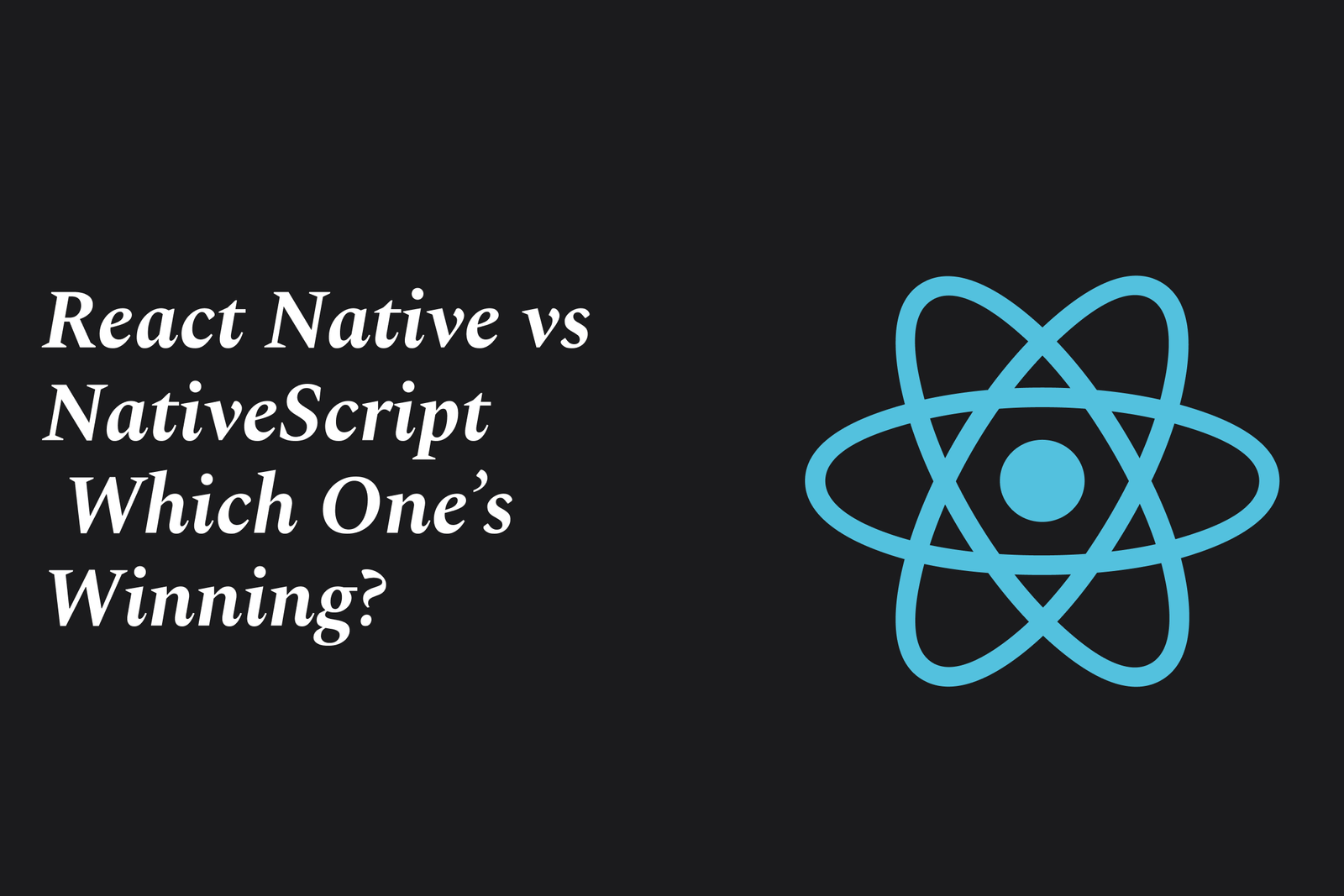React Native Vs NativeScript: Which One?S Winning?
React Native and NativeScript are top cross-platform frameworks for building native mobile apps using JavaScript. React Native, backed by Facebook, offers strong community and React integration, while NativeScript supports Angular/Vue and provides direct native API access. Choice depends on needs.
React Native vs NativeScript: Which One's Winning?
1 ) Introduction to Cross Platform Development
Cross platform mobile app development aims to reduce costs and development time by allowing one codebase to work across iOS and Android. Historically, this came with trade offs in performance or user experience, but modern frameworks like React Native and NativeScript have significantly minimized those issues, enabling near native performance with a unified codebase.
2 ) What is React Native?
Developed by Facebook (Meta), React Native lets developers write business logic in JavaScript, which runs on the native JS engine.
UI elements and styles are compiled to native iOS/Android components, avoiding browser based performance hits.
It champions the motto “Learn once, write anywhere,” offering native look and feel across platforms with ability for platform specific customizations.
React Native is battle tested, used by companies like Instagram, Skype, Airbnb, and Uber.
For web counterparts, solutions such as React Native for Web and ReactXP extend its ecosystem.
3 ) What is NativeScript?
Open source framework enabling native app development using JavaScript, TypeScript, Angular, or Vue.js.
Emphasizes “Write it once, run it anywhere,” managing UI uniformly across platforms.
Uses actual native UI components without web views, ensuring true native performance.
NativeScript Vue integration is mature, allowing Vue.js developers to leverage their skills.
Accesses native device APIs directly without the need for plugins in many cases.
Supports a rich plugin ecosystem and active community contributions.
4 ) Performance and User Experience
Both frameworks compile down to native components, ensuring smooth UX and high performance.
React Native may require bridging for some native modules, while NativeScript provides more transparent direct native API access.
Both provide native UI elements but differ in how they handle rendering and platform abstractions, influencing performance nuances.
5 ) Code Sharing and Development Efficiency
React Native excels when teams are already familiar with React, making the learning curve gentler for React developers.
NativeScript is versatile with multiple framework choices (Angular, Vue, or pure JS/TS), appealing to developers outside React ecosystem.
Both enable single codebase maintenance, but React Native additionally supports some ecosystem tools for web integration.
6 ) Community, Ecosystem, and Support
React Native has a larger community, broader adoption, and more mature ecosystem with abundant third party libraries and plugins.
NativeScript has a smaller but dedicated and growing community, with strong backing especially from enterprises favoring Angular or Vue.
7 ) When to Choose Which?
Choose React Native if:
Your team has React expertise.
You prioritize a widely adopted, thoroughly tested solution.
You want better web integration capabilities.
Choose NativeScript if:
You prefer Vue.js or Angular, or want flexibility in framework choice.
You need direct native API access without extensive bridging.
Your app use case benefits from a uniform UI experience across platforms with a desire to avoid React's JSX.
Summary
Both React Native and NativeScript provide excellent options for cross platform mobile app development in 2024, delivering native like performance and UI with a single codebase. React Native leads in popularity, community size, and web integration, making it ideal for React focused teams. NativeScript offers flexibility with framework choices and more direct native API access, appealing to developers seeking a more transparent native experience. The final choice depends on your team's skillset, project requirements, and preferred development workflow.
https://justacademy.in/news-detail/flutter-on-raspberry-pi:-new-examples
https://justacademy.in/news-detail/android-power-management-enhancements
https://justacademy.in/news-detail/react-native-and-expo:-the-dynamic-duo-of-mobile-development
https://justacademy.in/news-detail/building-pwas-with-flutter-in-2025
https://justacademy.in/news-detail/flutter-beta-features-worth-exploring
Related Posts
Java supports GDPR and data privacy by enabling secure data handling through encryption, controlled access, and precise data management. It allows developers to minimize PII exposure, ensure data confidentiality, and design workflows that comply with data protection regulations effectively.
Java code quality tools have evolved to include advanced static analysis, integrated security checks, and AI-powered code reviews. These updates help developers detect bugs, enforce coding standards, and enhance security, streamlining the development process and improving overall code reliability.
Java remains a cornerstone in big tech companies, evolving with modern features like records, pattern matching, and virtual threads. Its robust ecosystem, enhanced performance, and growing AI integrations keep it vital for both legacy systems and innovative new projects.
Java and CI/CD pipeline optimizations streamline Java application development by automating builds, tests, and deployments. They improve efficiency through parallelization, caching, and secure secrets management, enabling faster feedback loops and more reliable, scalable software delivery.
Java supports modern cryptography standards through its flexible Java Cryptography Architecture (JCA), enabling integration of advanced algorithms like AES, EdDSA, and post-quantum tools. Libraries like Bouncy Castle offer FIPS-certified, hardware-accelerated implementations for secure development.
Java 23 enhances record patterns by enabling concise, direct destructuring of record components within pattern matching, simplifying type checks and data extraction. This improvement boosts code readability and expressiveness by reducing boilerplate in handling immutable data classes.
Java remains a top choice for mobile app backends, powering scalable, secure, and high-performance server-side solutions. Latest trends include cloud-native microservices, reactive programming, and enhanced JVM optimizations, enabling efficient, flexible, and robust mobile backend development.
Java SE 24 and LTS Java SE 21 offer enhanced features and performance, while Apache Spark 4.0.0 introduces Scala 2.13 support and advanced ML and SQL capabilities. Together, they empower developers to build scalable, high-performance data applications with modern tools.
JUnit 5 modernizes Java testing with a modular architecture, improved assertions, and seamless Java 8+ support. Beyond JUnit, tools like Mockito and AssertJ enhance mocking and assertions, creating a powerful, flexible ecosystem for writing clean, efficient Java unit tests.
Java plays a pivotal role in cloud automation tools by providing a robust, platform-independent language used to build scalable automation frameworks like Jenkins and Selenium, enabling efficient CI/CD pipelines, testing, and orchestration across diverse cloud environments.










